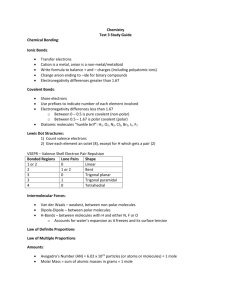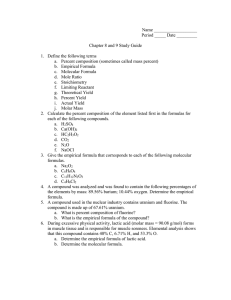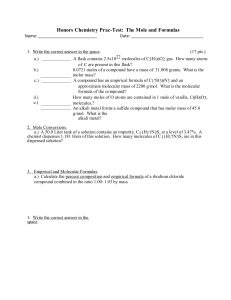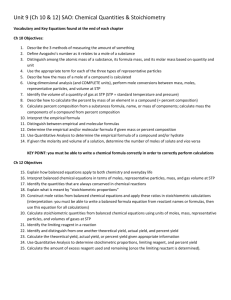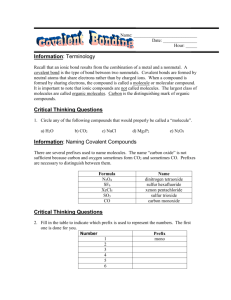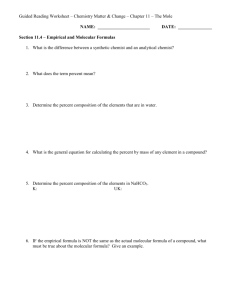A + B AB direct combination reaction AB A + B decomposition
advertisement
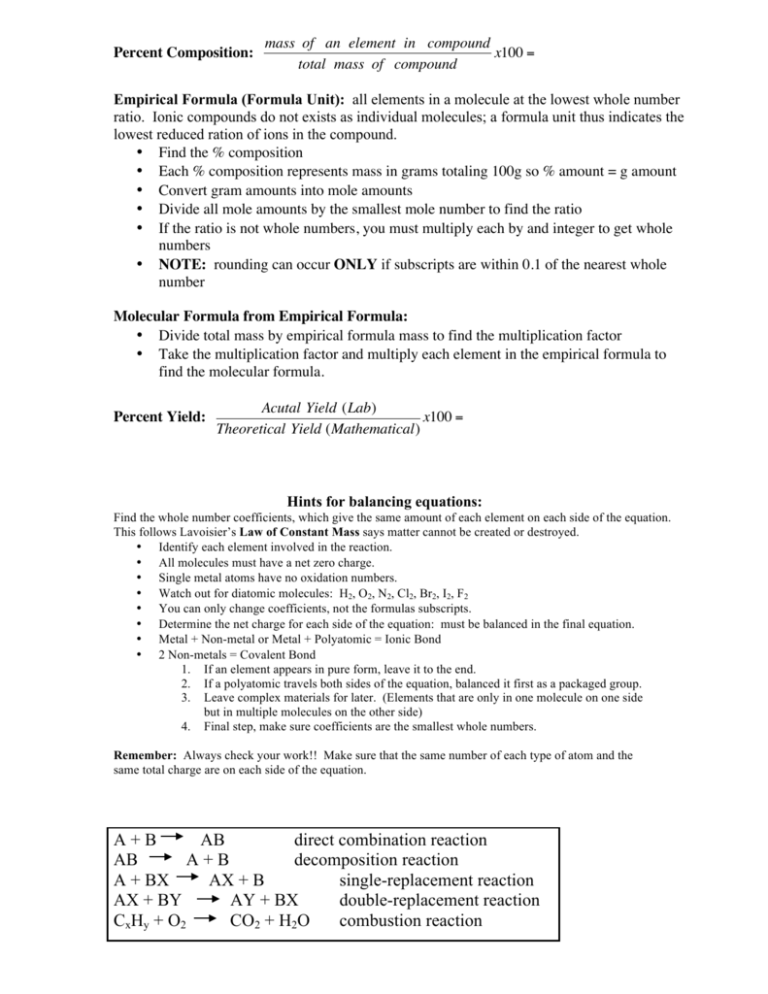
Percent Composition: mass of an element in compound x100 = total mass of compound Empirical Formula (Formula Unit): all elements in a molecule at the lowest whole number ratio. Ionic compounds do not exists as individual molecules; a formula unit thus indicates the lowest reduced€ration of ions in the compound. • Find the % composition • Each % composition represents mass in grams totaling 100g so % amount = g amount • Convert gram amounts into mole amounts • Divide all mole amounts by the smallest mole number to find the ratio • If the ratio is not whole numbers, you must multiply each by and integer to get whole numbers • NOTE: rounding can occur ONLY if subscripts are within 0.1 of the nearest whole number Molecular Formula from Empirical Formula: • Divide total mass by empirical formula mass to find the multiplication factor • Take the multiplication factor and multiply each element in the empirical formula to find the molecular formula. Percent Yield: Acutal Yield (Lab) x100 = Theoretical Yield (Mathematical) Hints for balancing equations: Find the whole number coefficients, which give the same amount of each element on each side of the equation. This follows Lavoisier’s Law of Constant Mass says matter cannot be created or destroyed. • Identify each element involved in the reaction. • All molecules must have a net zero charge. • Single metal atoms have no oxidation numbers. • Watch out for diatomic molecules: H2, O2, N2, Cl2, Br2, I2, F2 • You can only change coefficients, not the formulas subscripts. • Determine the net charge for each side of the equation: must be balanced in the final equation. • Metal + Non-metal or Metal + Polyatomic = Ionic Bond • 2 Non-metals = Covalent Bond 1. If an element appears in pure form, leave it to the end. 2. If a polyatomic travels both sides of the equation, balanced it first as a packaged group. 3. Leave complex materials for later. (Elements that are only in one molecule on one side but in multiple molecules on the other side) 4. Final step, make sure coefficients are the smallest whole numbers. Remember: Always check your work!! Make sure that the same number of each type of atom and the same total charge are on each side of the equation. A+B AB direct combination reaction AB A+B decomposition reaction A + BX AX + B single-replacement reaction AX + BY AY + BX double-replacement reaction CxHy + O2 CO2 + H2O combustion reaction
